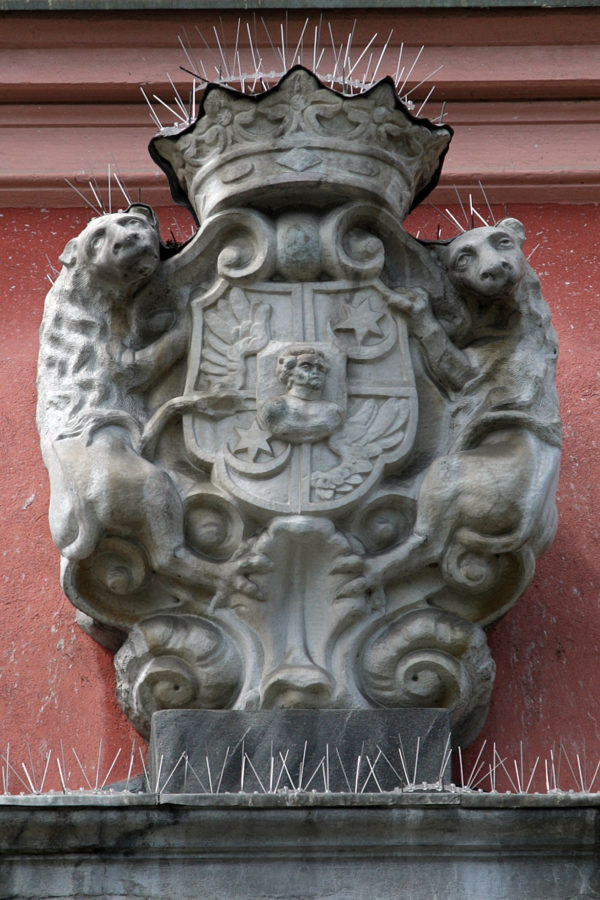
Coat of arms of the Barons Ruessenstein in Ljubljana
LJUBLJANA, PREšERNOV TRG, FRANCISCAN CHURCH OF THE ANNUNCIATION
Location of the coat of arms: façade
One of the most famous members of the Ruessenstein family, originally from Feistritz an der Drau in Upper Carinthia, was Konrad III (1604–1668), the head of the provincial financial administration in Carniola. In 1630, he and his brother Daniel were elevated to baronial rank and granted an improvement to the family coat of arms. After his son Johann Karl died during his studies in Rome in 1645, Konrad decided to donate the money originally intended for his son to the Augustinian order in Ljubljana. The old Augustinian church had just been demolished in the city, and Baron Ruessenstein provided financial assistance for the construction of a new one. In it, he also designed a family tomb in the form of a Loretto Chapel, which was also envisaged to serve as a monument to his late son. The memory of the Ruessenstein family in the church has been preserved to the present day, despite the endeavors by the Augustinian order in the eighteenth century to diminish its significance and presence in the church building. Above the church entrance, there is thus still visible a rather large stone coat of arms of the Barons Ruessenstein, supported by a pair of lions. It is not known precisely when the coat of arms was mounted on the façade, nor whether it was originally mounted somewhere else (e.g., on the removed Loretto Chapel). It is believed, however, that it was mounted in its current location during the first renovation of the façade about 1700. In any event, it appears in the drawing that Johann Matthias Steidlin produced in 1740. Left untouched, the coat of arms has thus graced the church façade for more than three centuries, only now it is “furnished” with long metal spines to deter pigeons from perching on it. The former Augustinian church is now the Franciscan Church, dominating Prešeren Square. The Franciscans moved there in 1784, after Emperor Joseph II dissolved the Augustinian monastery earlier that year.
Sources:
Prelovšek, Damjan: Arhitekturna zgodovina in pomen frančiškanske cerkve v Ljubljani. In: Frančiškani v Ljubljani. Samostan, cerkev in župnija Marijinega oznanjenja (ed. Silvin Kranjc). Ljubljana, 2000, pp. 280, 286.
Resman, Blaž: Oltarna oprema in plastika v cerkvi Marijinega oznanjenja. In: Frančiškani v Ljubljani. Samostan, cerkev in župnija Marijinega oznanjenja (ed. Silvin Kranjc). Ljubljana, 2000, pp. 302–307.
